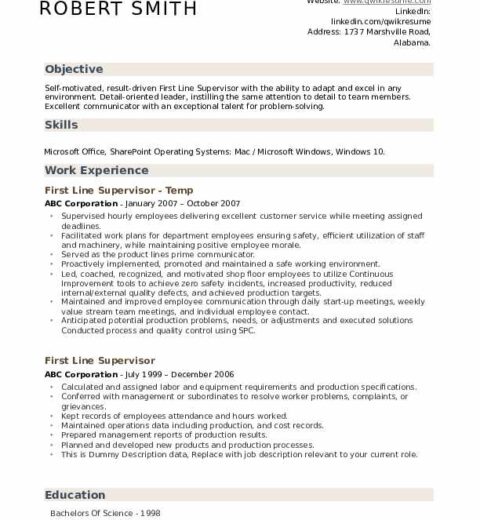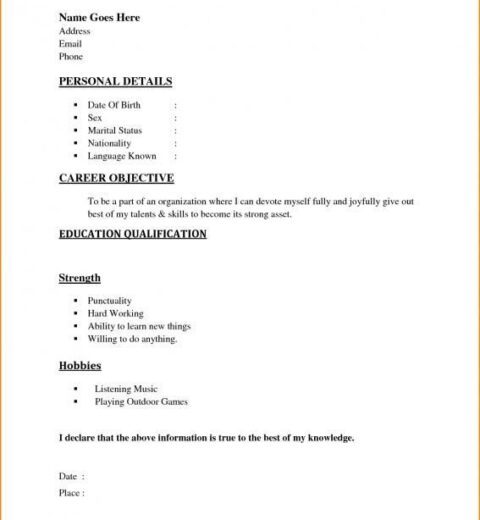In the modern job market, the adage that a résumé must be confined to one page has been both celebrated and scrutinized. Traditionally heralded as a succinct vessel for potential employers to gauge candidates’ qualifications, the 1-page résumé has faced evolving perceptions, and its rigidity is increasingly questioned. The necessity of brevity versus the need for comprehensiveness presents a nuanced quandary for job seekers, especially in an era characterized by rapid changes in hiring practices.
The conventional wisdom advocating for a single-page résumé stems from an understanding that hiring managers often peruse countless applications. In this context, a concise résumé can capture attention swiftly, highlighting essential skills and experiences without overwhelming the reader. This platform for succinct communication becomes particularly vital in industries where efficiency and clarity are paramount.
However, the dynamic nature of professional roles complicates this narrative. Numerous factors dictate whether a one-page résumé remains the optimal choice. For professionals with extensive experience, multifaceted roles, and varied skill sets, utilizing supplementary pages may be judicious. These individuals risk underrepresenting their accomplishments and capabilities by adhering rigidly to one page. Employers today increasingly value thorough narratives that provide insightful context regarding a candidate’s professional journey.
Moreover, industry norms vary markedly. In sectors such as academia, healthcare, and scientific research, multi-page documents such as CVs (curriculum vitae) are not just customary; they are expected. These formats allow for an exhaustive recount of publications, presentations, and research contributions, which enrich a candidate’s profile. Conversely, creative fields like marketing or graphic design may thrive on more visually engaging résumés that effectively encapsulate experience in unique formats devoid of restriction. Such disparities illustrate that industry expectations significantly influence the appropriateness of résumé length.
Furthermore, the trend towards a more narrative-driven résumé has gained traction. Applicants increasingly understand the value of personal branding, identifying their unique value propositions, and communicating them compellingly. This longer, more detailed format extends beyond mere bullet points of responsibilities; it allows candidates to weave together the story of their career, articulating not just what they did, but why it mattered and how it contributed to their growth and the organizations they’ve served. Consequently, presenting a broader narrative can elucidate one’s competence, cultural fit, and potential contributions to prospective employers.
Modern technology also plays a critical role in this evolution. The rise of Applicant Tracking Systems (ATS) necessitates not only the right keywords, but a robust presentation of skills and experiences that resonate with both technology algorithms and human hiring managers. Structuring information effectively across multiple pages, when done judiciously, can enhance visibility among the deluge of submitted résumés while ensuring that essential qualifications are not diluted in a relentless quest for brevity.
Nevertheless, even within industries that embrace longer résumés, clarity remains paramount. A résumé should be easy to navigate, showcasing pertinent experiences and skills at a glance. When extending beyond one page, consider formatting that emphasizes readability, such as headers for various sections, strategic white space, and bullet points for quick skimming. Presenting a well-organized résumé bolsters professionalism and demonstrates an understanding of clear communication—an essential skill in any role.
Moreover, crafting a résumé should be a reflective process, tailored to each application. Job seekers should consider the specificity of the role they are pursuing and align their résumé accordingly. If the job description highlights specific qualifications, pairing relevant experiences and accomplishments with the context of their importance allows for a compelling tailored narrative. It is this focused approach that can sometimes justify a longer format, as it demonstrates attentiveness to the potential employer’s needs.
Another factor in determining résumé length is the timing of job searches. Entry-level professionals and recent graduates often benefit from the one-page format, as their experiences may not yet warrant extensive elaboration. Yet, as careers advance, individuals accumulate experiences and skills that necessitate more space for portrayal. Understanding the timing of one’s career trajectory supports strategic decision-making about résumé length.
In conclusion, the notion that a résumé must strictly adhere to one page is increasingly antiquated. Job seekers should evaluate their unique circumstances—industry expectations, personal branding, technological considerations, and the particulars of the position they seek—when deciding on the length of their résumé. The modern hiring landscape values clarity, context, and cohesion over arbitrary constraints, thereby embracing the potential of expanded narratives that resonate with diverse audiences. Ultimately, candidates are encouraged to focus not merely on length but on the authentic representation of their professional journey, ensuring that their résumé communicates their qualifications effectively and compellingly.




